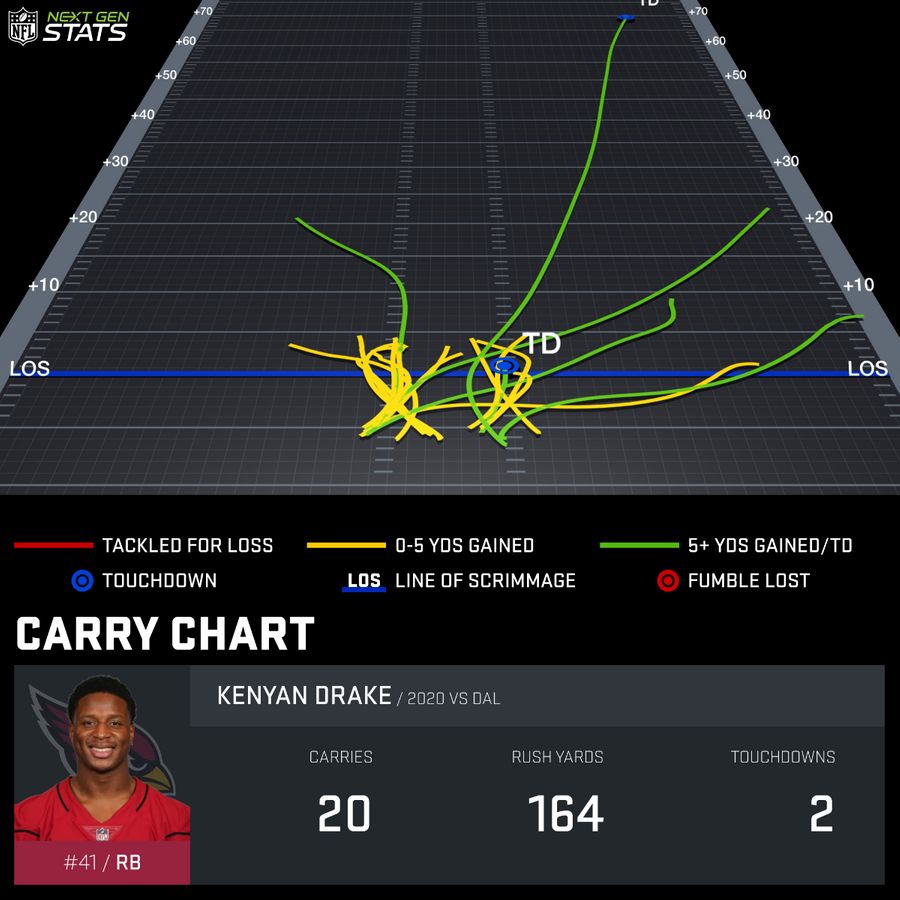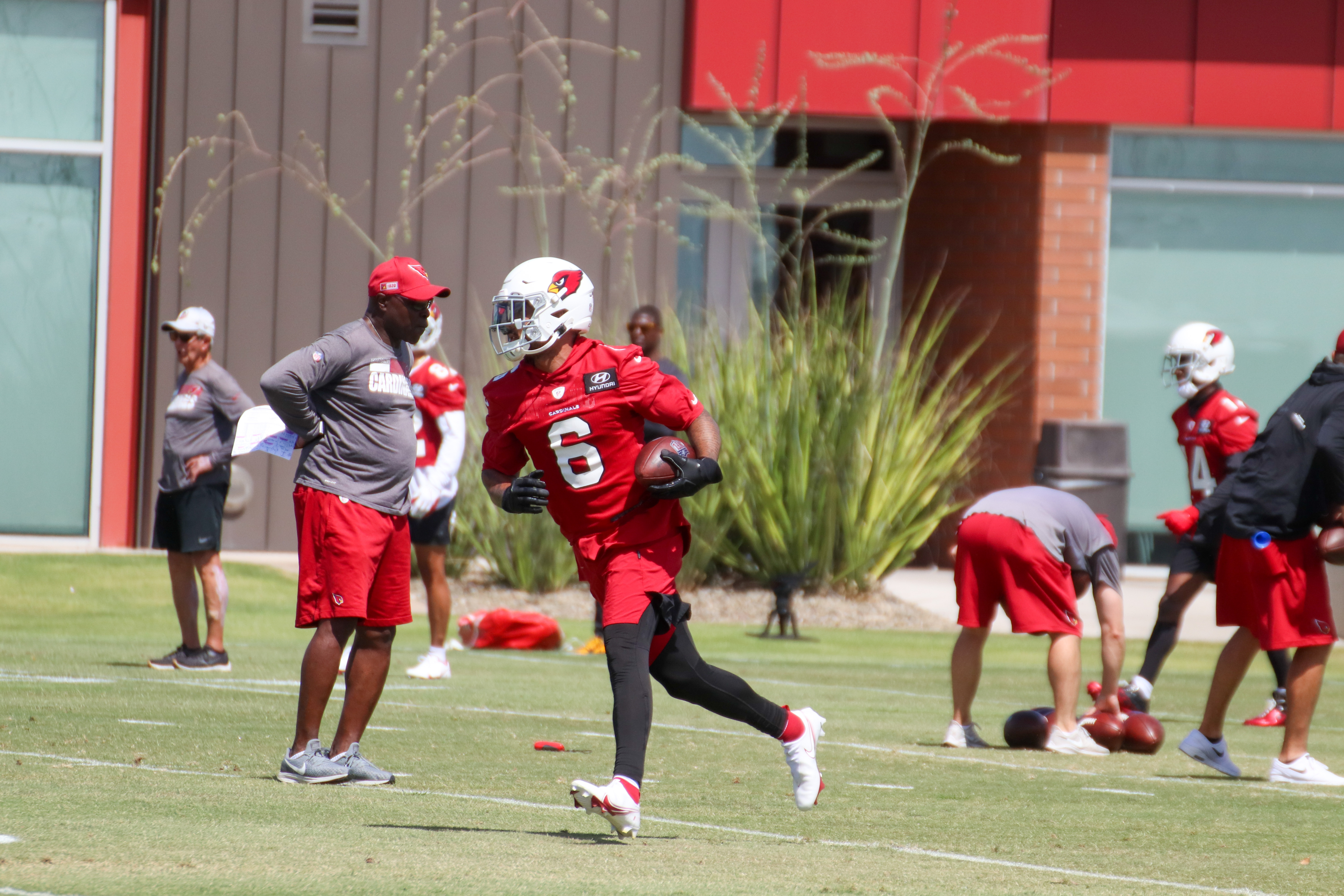The Difference: How Cardinals Change from Kenyan Drake to James Conner
The Red Sea has yet to see running back James Conner take the field during a Cardinals game.
Conner was inactive when his former team, the Pittsburgh Steelers, last faced Arizona in 2019. He never competed against the Cardinals during the first four years of his NFL career.
The Cardinals started Kenyan Drake in the backfield from the middle of the 2019 season through 2020, while Chase Edmonds emerged with increased snaps in 2020.
This year, the tandem in the desert will be Edmonds and Conner, who signed a one-year deal with Arizona in April. Drake left in free agency, signing with the Las Vegas Raiders.
The Cardinals swapped out their running back for a new face in the room, so how will the run game differ?
Physical traits
Simply put, Conner has the size advantage while Drake can hit a higher top speed.
The new Cardinals back is the same height as Drake at 6-foot-1, but weighs more than 20 pounds heavier at 233. Drake weighs about the same as Edmonds, so having Conner gives the Cardinals more variation, even though Drake is a different runner than Edmonds.

Drake showed off his impressive burst with the third-fastest top speed among NFL ball-carriers last year. San Francisco 49ers Raheem Mostert owned the top two plays. Drake hit 22.11 miles per hour on his 69-yard touchdown rush in Dallas during Arizona's 38-10 win over the Cowboys in Week 6.
Drake may be more difficult to catch in open space, but Conner still has lateral mobility to bounce to the outside for big runs. Plus, he can use his size, strength and speed to bust through holes at the line.
This is an area where Drake struggled last season. He was stuffed the third-most times in the league last year, while Conner was tied for 11th. Drake mentioned last season that he struggled running north and south early in the season. The Arizona offensive line performed much better in pass protection than for the run, and Drake found trouble waiting for holes to open or fighting through small ones.
Conner is the more natural downhill power back who can plow through defenders up the middle. He gained more yards after contact than Drake last year (2.0-1.7) and had fewer attempts between broken tackles (9.9-14.9). This was while both backs saw 2.3 yards before contact on average.
Have fun trying to tackle @JamesConner_ 🤷♂️
— NFL (@NFL) May 5, 2020
Happy birthday to the @steelers RB! pic.twitter.com/rQIbAP9OGK
"(Conner's) been extremely physical, which again, was an area we wanted to improve as a football team," Cardinals general manager Steve Keim said after signing the former Steeler in April.
This can be especially helpful in the red zone. Drake received the fifth-highest percentage of carries inside the 10-yard line in the NFL last year, lots of which came on draws up the middle on option plays. However, his touchdown rate inside the 3-yard line was 17th in the league, while Conner was fifth.
The former Steeler will also benefit from the Cardinals adding center Rodney Hudson to improve that position this offseason and with the possibility of physical guard Brian Winters winning the starting job at right guard. The Steelers also failed to do a strong job of run blocking in 2020.
Another area where Drake has had the upper hand is availability. He played in 23 of 24 games as a Cardinal, while Conner missed nine weeks over the last two seasons.
Roles
A major difference between what the Cardinals got from Drake and what they can expect from Conner could be in terms of volume.
Drake ran the ball 239 times in 15 games last year. Conner has never run the ball that many times in a single season.
Chase Edmonds sprints to the pylon for SIX. #AZCardinals
— NFL (@NFL) September 13, 2020
📺: #AZvsSF on FOX
📱: NFL app // Yahoo Sports app: https://t.co/5o8cWoN1yf pic.twitter.com/F4oNJNqZev
But, he might not be expected to accumulate numerous carries as a testament to Edmonds' continued progression, which could see him continue to add to his rush totals. He ran the ball 97 times in 2020 compared to 60 in each of his first two years. The Cardinals did not make it a major priority to sign a running back early in free agency or draft one because of their belief in Edmonds.
He gained 4.6 yards per carry in 2020 while Conner finished at 4.3 and Drake 4.0. The fourth-year Cardinal finished with a higher Defense-adjusted Value Over Average (DVOA) than either back while he averaged more rushing yards over expected than Drake, per NextGen Stats.
Plus, Edmonds was sixth among NFL running backs in receiving yards.
Edmonds has never been a bell-cow before, so Conner comes in to set up a potential platoon. How exactly the snaps get divided won't be decided until training camp at the earliest.
"I think that's something we'll work through," head coach Kliff Kingsbury said during OTAs. "James brings a tough, physical downhill running attack. He's a proven tough-yard runner in this league since he got into it and the thing I liked most about him and Chase is their approach to the game.

"They are as serious as you can be out on that field, ultra competitors. They're going to push each other and give us a real one-two punch that I think can really help us next season."
Of course, Kyler Murray also ran the ball 133 times, third-most in the NFL by a quarterback. He said during minicamp that he feels his legs should be a bonus, not leaned upon.
"My legs should be luxury and it kind of wasn't like that last year," Murray said. "It was kind of me having to run for us."
So whether his rushes go down could also affect how Conner's season will differ from Drake's 2020.
Conner said in his introductory press conference that he was not given specifics to what his role will be on the field, but he knows what it is to him.
"The only thing I can guarantee in my role is here is I'm going come here and play hard; that's going to be my role," Conner said. "The rest of stuff will take care of itself."
